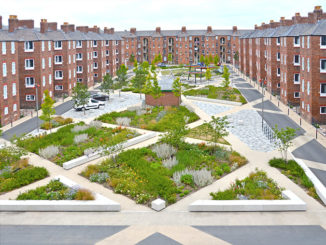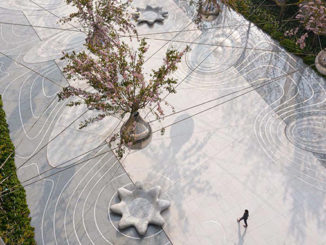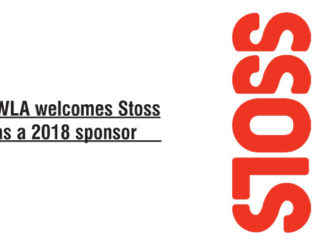Early in 2017, I wrote a post looking at Landscape Architecture trends in 2017 and beyond, many people found this an inspiring piece that also became the inspiration for my presentation at World Design Summit in Montreal in late 2017. Now, in early 2018 it seems an apt time to review that post and look to what to possible trends in 2018 and through into the early 2020’s.
Revisiting Landscape Architecture trends in 2017 and beyond
Climate Adaptation, Alternative Transport Modes, BIM, Data Research and Landscape Illustration became more in focus during 2017, with various news reports and growing need to look to how we use the data and information we have to provide solutions and increase the speed of implementation. What seemed to not grow as I anticipated was the push for Local solutions at grand scale, Rural and Remedies, Human Scale and Local Uniqueness, and Alternative Transport Modes. It seemed 2017, was more about people kept getting caught up in the daily outrage news cycle (Trump, Brexit, etc) and also the instantaneous gratification through the image of the finished project. Think about how people used Instagram, Facebook in 2017 compared previous years of platforms with Twitter and Facebook with spring rising etc.). There seemed to be a lack of focus on providing solutions and more about revelling in the problems. Not there was no advancement of ideas and solutions it seems a year that many would like to leave to the past, so onward and upward to 2018.
2018 and beyond
Based on what we saw in 2017 in Houston, Bangladesh, India, Russia, Germany, Poland, Czech Republic and many others that we need to realise that there are cities, towns that we founded and continue to expand into areas of environmental high risk and that 2018 needs to be less a time for thinking and more a time for action for the immediate issues. The recent flooding and freezing in Boston is a case in point, much work has occurred on a policy side and works have started but it seems more action needs to be taken.
Climate Adaptation
Our state/provincial and local governments need to start to realise that they need to take action and start reallocating budgets from grey infrastructure (large roads, rail,) to blue/green infrastructure. There is no longer an excuse that governments are expending millions on roads to satisfying the growth and congestion issues when you have large areas of your town or city that could be devastated by environmental incident that requires larger budgets to rebuild because you allowed developers and public/private partnerships to build in areas of medium to high risk. 2018 is the time that cities spend their budgets on climate adaptation projects and satisfy the issues now and not in 25 years time when you just won’t have the budgets to rebuild and are required to abandon that area such has occurred in New Orleans, South Florida, Indonesia. Landscape architects need to work with engineers and other stakeholders in assisting with realising resilient solutions and implementing them, whether that is a low-impact water sensitive design or preparing a city to relocate people to new areas as climate refugees.
Terrorism and Security
The growing issue of terrorism with individuals or small groups (some terrorism, some mentally disturbed people) using cars and weapons to injure others will change cities in 2018 with more focus on providing safer places to travel and increase in surveillance. Landscape architects will have to start designing more ingenious ways to make spaces to increase security.
Temporary Cities
We will see the need for temporary cities to house people during environmental and political incidents such as still occur. These will have to geared towards longer periods of occupation (years instead of months) as cities try and determine the best course of action (letting people return to homes or realising it may be an opportune time for permanent relocation).
Shared Spaces
Although they have been occurring in cities for centuries, shared spaces leaning more toward will become more prevalent due to increased densities, change in transport modes, pedestrian requirements and increased security requirements. With the use of data we will also be able to show that high-street retail strips are not failing due to reduced parking and low speed shared spaces but it is due to the change in retail spending habits (same number of people visiting but change in the mix going to retail vs heading to cafes, restaurants, recreation.)
Data
Over the last 5-6 years there have been many pilot projects gathering data on how people use spaces during the day and also during events. This data can assist landscape architects as designers of spaces and cities to determine the current and future needs of cities. Modelling software previously used for emergencies, theme parks and transport will become more of a mainstream tool for designers to use and model various design requirements. Designing for best practice and regulations will still be required but the tools we have can allow for landscape architects to provide suggestions to improve designs and standards. Data gathering techniques will also change from measuring people, flora and fauna to also an increase in the localised (site, street,) measuring (before/after) of water, wind, sun, etc as monitoring equipment (drones, robots, infrared, wifi) become more mainstream and cheaper.
Alternative Transport & Models
We the past year have seen an increase in the number of electric and hybrid cars, buses, along with more rail and light rail projects announced. Also, we have seen undocked bikes in various cities across the world (mostly provided by China/Singaporean) companies but we have seen the model has changed from government roll out of share bikes in docks to private companies rolling out undocked bikes and using the user fees and selling user data to provide income. In 2018, we will see an increase in private companies rolling out shared transport to obtain data to use for consulting or other services.
Inclusive Design
Designing spaces for play, recreation, and gathering for all ages and all people will need to become more apparent in 2018. Play is required for all ages to improve health (mental and physical) and also allows for generations to reconnect in a period where screens and the internet is increasingly taking more of our time and increasing the divide between socio-economic and age groups.
Nature Play
An increase in nature play designs will occur as cities start to realise that large areas of rubber and synthetic grass have a higher long-term cost to build and maintain. Although helicopter parents will still require risks to be eliminated where possible, however, the use of materials and types of play will move towards nature-based principles and design ethos.
From VR to MR to AR (Immersive Design)
Over the last 5 years VR (Virtual Reality) has become a tool that many landscape architects and designers have used to provide clients and communities with a real-time, interactive and immersive view of their designs, however VR does have drawbacks, e.g. some people get motion sickness and others feel uncomfortable wearing the headset as it creates disconnection – unless the whole team is experiencing the same view. As many firms have VR the next step for many will be MR (Mixed Reality) where designers and clients are able to manipulate the model with handsets (and in future gestures). Also, AR (Augmented Reality) will start to grow in popularity as a tool, as it requires only a recent phone or tablet to show the model in the space. AR will also become popular as a tool with designers at reduces the gap between the designer and the public due to the high levels of ownership of phones or tablets.
BIM
Landscape architects will continue to struggle with BIM due to the cost of upskilling and upgrading. Although software companies (Vectorworks, etc) are increasingly providing tools within their new releases to reduce the need to add or move to Revit or Microstation therefore not requiring full change in platform in offices. BIM still poses many issues as the site modeling is not as smooth as designers would like (think faceting rather than sculpting) and it often the benefits for landscape architects are not much beyond a well developed Sketchup model.
Continuous Design (2018 and beyond)
Due to the ability to continually design through the 3D platforms from concept to maintenance, design stages will start to be less important and firms will change their business models from stage to stage to charging for continuous design. Although this may seem far off, the more adapation of 3D through VR, AR and BIM platforms.
A Return to Sketching
Although it may seem that 3D will rule the future, due to the increase in iPads and tablets with pens we will see a return to sketching, as a quick medium to start an idea and continue from concept to CAD. Many may bemoan the loss of ink pens and trace paper but I feel many will switch due to the ease of working with digital paper and pen.
Maintenance
Similar to 2017, there will be an increase in hybrid and electric equipment. Also automation of heavy manual tasks such as bricklaying, grouting, cleaning along with inspections complete by drone.
Residential
Also similar to 2017 – home systems will increase as people with to automate their home and have wifi for devices available in every space of their property. With the cost of devices such as Google Home, Alexa, Nest reducing as competition increases we will see these move to outside the home with external units. For design trends, we will see more outdoor kitchens, outdoor cinemas, firepits, as people wish to increasingly blur the lines between inside and outside their houses.
Increase in Landscape Architecture profile
In recent years we have seen the profile of landscape architecture and landscape architects increase as clients and other professionals come to realise that we are generalists who cover some many aspects and can provide better design solutions for projects from the beginning and not after the initial planning and design is complete. In 2018, this should continue although not as quickly as we would hope the increase in recognition of landscape architecture is growing.
I hope that this post provides you with some good ideas and that you have a great 2018.
Article Written by Damian Holmes, Founder and Editor of WLA. He is also a registered Landscape Architect with experience as a landscape architect in Australia, Canada, and China.




